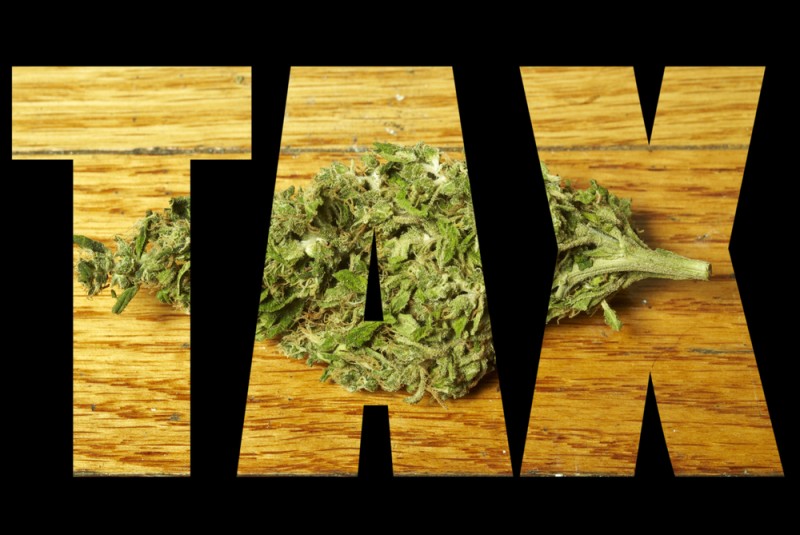
Since the dawn of legal adult-use marijuana markets in 2014, U.S. states have collectively generated nearly $25 billion in tax revenue from cannabis sales, marking a transformative milestone in the nation’s approach to cannabis policy and public finance. A recent report by the Marijuana Policy Project (MPP) reveals that in 2024 alone, states with legalized adult-use cannabis collected more than $4.4 billion in tax revenue—the highest annual total recorded to date. This surge reflects the rapid expansion and maturation of cannabis markets across the country, as well as their growing economic and social significance.
The Rise of Legal Cannabis Tax Revenue
The first legal adult-use cannabis markets opened in Colorado and Washington in 2014, pioneering a new era of regulated marijuana sales in the United States. Since then, a growing number of states have followed suit, creating a patchwork of legal markets that collectively generate billions in tax revenue annually. According to the MPP report, the total tax revenue from adult-use cannabis sales now exceeds $24.7 billion nationwide.
The year 2024 was a landmark period, with states generating over $4.4 billion in cannabis tax revenue from adult-use sales alone. Seven states collected more than $200 million each, with four states surpassing $500 million, and one state exceeding $1 billion in cannabis tax revenue. California leads the nation in total revenue, having generated over $4.66 billion since legalization, followed by Washington and Colorado with $2.85 billion and $2.34 billion respectively.
This revenue comes from a variety of tax mechanisms including excise taxes, retail sales taxes, and licensing fees. Tax rates vary widely by state, from flat per-ounce fees in Alaska to percentage-based excise taxes as high as 37% on retail sales in Washington. For example, California’s cannabis tax rate is set to increase from 15% to 19% in mid-2025, the highest in the country, reflecting efforts to maximize state revenue while balancing market dynamics.
Economic and Fiscal Impact
The cannabis tax revenue generated by legal markets has become an important, though still modest, source of funding for state governments. While the headline figures are impressive, marijuana taxes generally represent a small fraction of overall state budgets. In mature markets like Colorado and Washington, cannabis tax revenue accounts for less than 1% of total state budgets—approximately 0.78% and 0.77%, respectively—while California’s share is smaller at roughly 0.44%.
Despite this relatively small share, cannabis tax income provides critical supplemental funding, particularly as states face economic uncertainties and federal funding cuts. These revenues support a broad range of public services and community programs, including:
-
Law enforcement and public safety initiatives
-
Substance abuse prevention and treatment programs
-
School construction and early literacy efforts
-
Public library funding and bullying prevention
-
Veterans’ services and job training programs
-
Environmental conservation projects
-
Conviction expungement and community reinvestment efforts targeting populations disproportionately affected by cannabis prohibition
In some states, cannabis tax revenues have even rivaled or surpassed alcohol tax collections in certain fiscal years, signaling their growing fiscal importance. Moreover, the cannabis industry has contributed significantly to job creation, supporting over 440,000 full-time equivalent jobs nationwide, and fostering thousands of small business opportunities.
Challenges and Limitations
Despite the impressive growth in cannabis tax revenue, several challenges temper the financial picture. High tax rates in some states have been criticized for driving consumers back to the illicit market by making legal cannabis comparatively expensive. For instance, California temporarily reduced its cannabis taxes to help licensed businesses compete with black market sellers.
Additional obstacles include:
-
Federal prohibition, which restricts cannabis businesses’ access to banking and financial services, complicating tax collection and business operations
-
The relatively small size of cannabis tax revenue relative to overall state budgets, limiting its capacity to address large-scale social or fiscal challenges
-
The need to balance tax rates carefully to avoid fueling illicit sales while generating sufficient revenue
-
Regulatory complexities and compliance costs that can hinder market stability and business growth
These factors highlight the delicate balancing act states must perform to sustain healthy, competitive legal cannabis markets while maximizing public revenue.
Social and Legal Implications
Beyond economic benefits, marijuana legalization has brought profound social and legal changes. Ending cannabis prohibition has substantially reduced arrests and criminal records related to marijuana possession, which:
-
Frees law enforcement resources for other priorities
-
Reduces the social and economic harms of criminalization, particularly in communities disproportionately impacted by drug laws
-
Advances social justice through conviction expungement and reinvestment programs
Currently, more than half of the U.S. population lives in states where adult-use cannabis is legal, reflecting a major shift in public policy and societal attitudes. Legal markets also provide:
-
Regulated product safety and quality control
-
Consumer protections and standardized labeling
-
Public health education on responsible use
-
Funding for behavioral health and substance abuse programs
These social and legal transformations complement the economic gains, contributing to a broader redefinition of cannabis policy and its role in American society.
State-by-State Highlights and Tax Structures
Tax structures vary widely across states, affecting revenue generation and market dynamics. Some examples include:
-
Washington: Imposes a 37% excise tax on retail cannabis sales, one of the highest in the country, which has helped the state collect over $2.85 billion since legalization.
-
California: Currently levies a 15% excise tax on retail gross receipts, increasing to 19% in July 2025, alongside state and local sales taxes. California has generated over $4.66 billion in cannabis tax revenue to date.
-
Illinois: Applies a tiered tax system, including a 7% wholesale tax and retail taxes ranging from 10% to 25% depending on THC concentration, generating hundreds of millions annually.
-
New Mexico: Began adult-use sales in 2022 with a 12% retail excise tax, increasing gradually to 18% by 2030, raising over $76 million in 2024 alone.
-
Maryland: Legalized adult-use cannabis in 2023, starting with a 9% retail tax increased to 12% in 2025, generating more than $72 million in its first full year of sales.
These varied tax regimes reflect different policy priorities and market conditions, influencing both revenue and consumer behavior.
The Future of Cannabis Tax Revenue
The cannabis industry is projected to continue its rapid growth. According to industry forecasts, the U.S. cannabis market is expected to reach approximately $45.3 billion in total revenue by 2025, with legal recreational sales expanding steadily through the decade. By 2030, legal cannabis sales could approach $58 billion annually, driven by new state legalizations, market maturation, and increasing consumer acceptance.
As more states consider legalization, the fiscal potential grows. For example, Pennsylvania, which has not yet legalized adult-use cannabis, could generate over $2 billion annually in tax revenue if it moves forward. This untapped potential underscores the financial incentives for states to regulate cannabis markets.
However, federal prohibition remains a significant barrier, limiting interstate commerce, banking access, and broader industry growth. Legislative efforts to reform federal cannabis laws could unlock new economic opportunities and streamline tax collection.
Conclusion
Nearly a decade after the first legal adult-use cannabis markets opened, states have amassed nearly $25 billion in tax revenue from marijuana sales. While cannabis taxes currently make up a modest share of state budgets, they provide meaningful supplemental funding that supports vital public services and community programs. The industry has also spurred significant job growth and social change, reducing criminal justice burdens and expanding legal access.
Challenges remain, including balancing taxation to undercut illicit markets and navigating federal-state legal conflicts. Nevertheless, the continued expansion and maturation of legal cannabis markets signal that marijuana tax revenue will play an increasingly important role in state economies and public policy.
As the cannabis industry grows and more states join the legalization movement, marijuana tax revenues are poised to become a more substantial and stable source of public funding, shaping the economic and social landscape of the United States for years to come.







